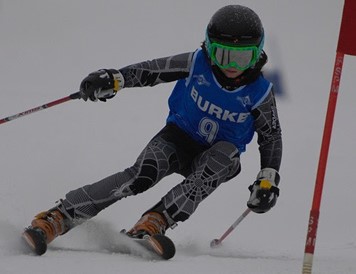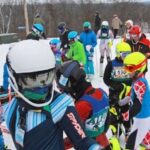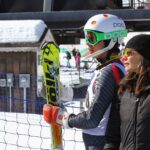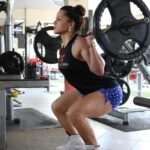You might be asking, “Who the heck is Parker Biele and why does she deserve hero status?” Or, you might be asking, “I know Parker Biele and why the heck does she deserve hero status?” In either case, I’ll answer your question shortly. But first, I want to explain what inspired me to write this article about Parker, provide some context for what insights it might provide, share her backstory, and conclude with some lessons we might garner from Parker’s example.
My initial interest in writing this article was Parker’s sixth-place finish in GS at the U.S. Nationals races in Copper in November. This result was, in some ways, shocking to many given that Parker is a senior at Boston College (not a traditional ski racing school) and that this current apogee of her developmental trajectory would likely not have been predicted by anyone in the U.S. ski racing community given her ski racing history (more on that later).
Notes Parker, “I was pretty excited to finish 6th. I was pumped because again, I had proven to myself that I could compete with the best even when they have way more training and resources. The best part was talking to Kirk [Dwyer] the next day and him smiling and saying, “Nice job Parker, now imagine what you can do with training.” My fire is larger than ever, and with the uncertainty of the season, each race is precious, and I plan to give it everything I have every time I’m back in the starting gate.”
Parker’s outstanding result at what many would see as near the end of her ski racing career caused me to look at her performance from both psychological and Long-term Athlete Development (LTAD) perspectives. First, psychologically, questions I asked myself included: “What motivated Parker to want to set high goals that would have seemed unlikely to be achieved based on her early ski racing development?”, “What mental and emotional attributes enabled Parker to continue to believe in herself in the face of much early failure?”, and “What attitudes allowed Parker to persevere in the face of considerable evidence that she did not have a bright future in our sport?” If I could identify those qualities, they might act as a model for other ski racers with big dreams, but a slow start, to continue to pursue their dreams with confidence, commitment, and vigor.
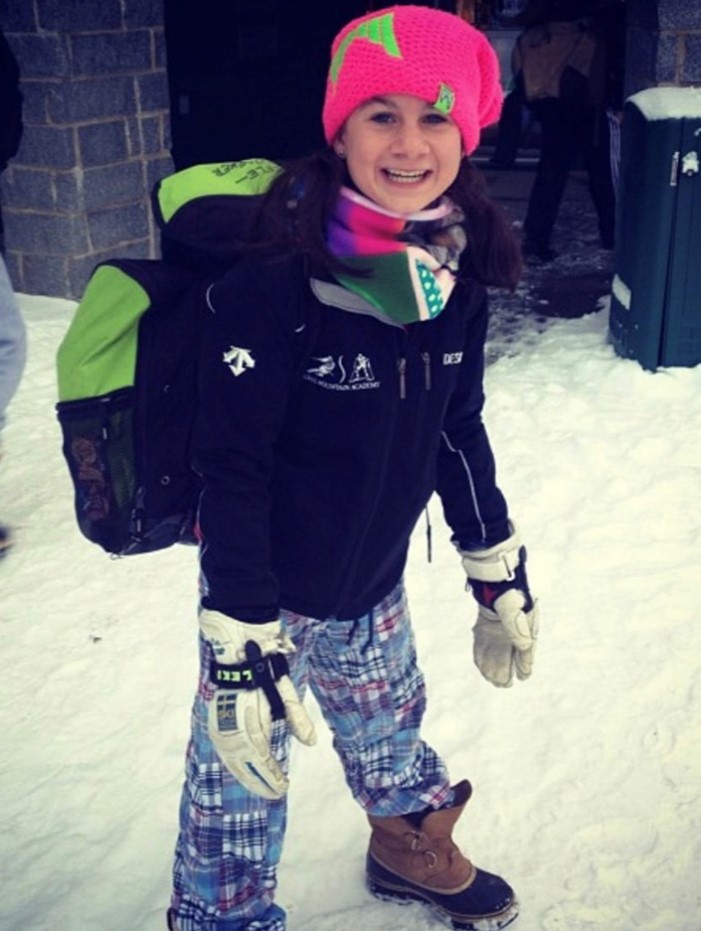
Second, I saw Parker’s performance in the context of the ongoing conversation in the U.S. ski racing world about what sort of development system will lead the U.S. Ski Team to full its vision of “Best in the World.” I put Parker forth as a hero and a role model as part of this national discussion about the different development paths to the USST and beyond that are available to racers now. This conversation has become particularly relevant and acute in light of the controversial statements that Tiger Shaw, the U.S. Ski & Snowboard C.E.O, made earlier this year that seemed to devalue the college route and, by extension, later athletic development, as a legitimate path to the top of the ski racing world.
Now, to Parker’s backstory.
I met Parker Biele her first year at Burke Mountain Academy when she was 13 years old while doing sport psychology work there. There were several aspects of Parker that stood out immediately to me. First, Parker was unusually extroverted and outgoing. Second, she was very intelligent. Third, she was tiny (4’10”, 81 lbs.). Fourth, she was incredibly determined and a very hard worker. Part of my attraction to Parker’s story was personal; I could relate to her situation. When I arrived at Burke when I was 13 years old, I was 4’9” and 89 lbs. I too was labeled as having no “potential.” The biggest differences, though, was that I was incredibly introverted and shy, plus I was an underachiever until I was 16 when some switch flipped inside of me and I found my inner drive to be my best.
Recalls Parker, “I always did everything in my power to be the best I could possibly be in all the areas of my control. I may have only been 4’10”, but I was never going to be outworked.”
Recalls Kirk Dwyer, the current CEO of Ski & Snowboard Club Vail and the former headmaster and Parker’s first coach at Burke, “My initial impression of Parker when she first began looking at Burke was she was a young skier with great enthusiasm…She clearly had a lot of work to do with her skiing but she was very enthusiastic, motivated, and determined.”
Over the years when I visited Burke, Parker was one of the few kids who would approach and engage in conversation with me. As a result, I kept an eye on her as she developed as a ski racer. As Parker readily admitted to me during a conversation in Vail recently, she wasn’t a particularly good ski racer at Burke. Kirk Dwyer told me recently that she was a “marginal acceptance,” meaning she almost didn’t get into Burke. But he and others saw something in Parker that warranted admission and that they believed would enable her to make a meaningful contribution to Burke even if not through her skiing.
Reflects Parker, “My early career was a lot of uphill battles, but each uphill allowed me to gain grit, and life lessons to be applied later in my career. Not being the best U14 or U16 allowed me to get used to skiing rougher courses, so when I got to first-year FIS (where everyone starts with 990 FIS points), and I was starting last, I was unphased. Everyone who was used to starting first struggled. They didn’t know how to have a bib that was in the triple digits or race on a course with ruts. That mental strength allowed me to persevere where others were dragged down by it.”
Observes Kirk, “Athletically for Parker’s first years at Burke, she was clearly on the late maturation end of the biological development spectrum. Females tend to mature roughly two years earlier than males, but within gender groups there is a 4-5 year range. So for two athletes the same exact chronological age you can have up to a five year difference in their physical maturation. However being later maturation presents an extended opportunity for skill development as she was still in the optimum period for this stage. She worked very hard, applied herself to make the effort to do her very best, and although frustrated at times did not ever diminish her effort despite not achieving the level of results she desired.”
Parker’s ski-racing career at Burke was decidedly inauspicious nor did it portend the results she achieved in November and she didn’t qualify for U14, only qualified for U16 Easterns her second year (28th in GS, 33rd in SL). Her FIS profile as a senior at Burke was 66 GS points and 97 slalom points, not low enough to be recruited by any of the collegiate ski-racing powerhouses. Parker was, nonetheless, recruited by Boston College. Many ski racers with her past record and FIS profile would have decided to call it a career. But, as I soon discovered, Parker was just getting started!
Notes Parker, “I never got chosen to go to any of the U16 projects. I would sit in the parking lot at Burke and watch my friends drive away to go to those amazing training camps. It stung a lot. But I knew deep down that those projects were just training days, and I could get more time on snow at Burke. So I would keep training and keep lapping and knew that my work would pay off one day.”
Adds Kirk, “Nothing in her skiing results during her first four years at Burke would have predicted her recent successes. However, Parker called me this past spring to let me know she had been recognized as the Boston College female athlete of the year and then said – “Do you remember how you always told me if I kept working hard and making the effort to do my best, it would come? I always trusted you but I didn’t necessarily believe it.” Her work ethic and commitment to consistently make the effort to do her best DESPITE not having the performance rewards were predictors of her potential to be an outlier and someone who might develop later.”
I could relate to Parker here as well because I also had a coach during my time at Burke, the late Marty Heib, who also believed in me and saw something in me that I hadn’t yet seen in myself.
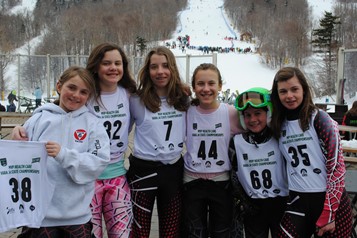
So, what might we gain from examining and extracting lessons from Parker’s developmental arc? Let’s start with what it takes to keep going without the external reinforcement of results. From my observations of Parker and conversations I’ve had with her over the years, it is clear to me that she possessed an essential foundation of attitudes and beliefs that propelled her forward in the face of immense barriers, setbacks, and failures. Those include:
- a resilient belief in her capabilities,
- a powerful intrinsic drive to be her best,
- an unwavering focus on the process,
- a preternatural degree of patience, and
- an emotional maturity that helped her through the slow progress and disappointments.
All of these attributes enabled Parker to adopt a “growth mindset” that resulted in approaching her ski racing with hope, a sense of what is possible, and as opportunities to pursue her dreams, rather than with doubt, a sense of what is not possible, and as obstacles to her dreams. What is powerful about these qualities is that, though they can’t be taught, they can be nurtured by parents and coaches and learned by athletes as they develop (again, like Parker, I was a case in point of this capacity).
Says Parker, “My biggest life lesson was how to keep my composure. Every time I got knocked down, I had to figure out how to get back up. Even when a majority of the time I wasn’t winning, I still kept my cool.”
Affirms Kirk Dwyer, “Ultimately I believe the qualities which enabled her to sustain her drive were a deep love of skiing, a love of the process of trying to do one’s very best, seeing skiing as an open-ended pursuit of becoming better and more. I think she has always embraced the nature of having the goal of making the effort to become the best she can be.”
From an LTAD perspective, there are equally valuable lessons we can take from Parker’s example. First, the clear acknowledgement that athletes develop on different trajectories and at different rates. The prodigies don’t always pan out and the late bloomers sometimes rise to the top.
Second, admittedly, early success tends to lead to later, long-term success in sport (e.g., Shiffrin, Hirscher). At the same time, there is a growing body of evidence in ski racing that late bloomers (meaning post-college) can also find considerable success; for example, Haugen and Read.
Third, as someone who was a researcher early in my professional career, the question I ask myself is: Is Parker a statistical anomaly and, as a result, not worth including in the LTAD calculus? Though I believe that Parker is special (in many ways), I don’t think she is so special as to be unique. Or is she simply a newly uncovered example of another trajectory that may lead to the top of the ski racing heap? If the latter, what might happen if U.S. ski racing welcomed and actually encouraged young ski racers like Parker who possess the necessary psychological and emotional profile, may have as-yet unrealized talent, but are developmentally years behind the curve. I think we would see more young racers staying committed to their dreams, a reduction in attrition in the first two years of FIS racing (especially among girls) that is painful to watch now, and, with time, more and more unheralded racers “coming out of the woodwork” and finding success at the highest level of our sport.
Concludes Parker, “As a senior in college with graduation fast approaching, I should be looking towards the next part of my life and starting my professional career in marketing. Yet as much as I look forward to my professional life, I am still trying to reach my ski racing goals. I know that my door isn’t closed yet and that the fire inside me burns brighter than ever, so I can’t give up. I will be ready to race when the opportunity arrives, and I will be ready to give it my all as I strive to continue to lower my world ranking. If that be racing World Cups, Europa Cups, or just finishing in the top ten at Nor-Ams, I will put everything I have into accomplishing as much as I can and becoming the best ski racer I can be.”
Concludes Kirk, “The norm is female athletes who have progressed as older athletes from college to having success on the World Cup have been former national team athletes [e.g., Paula Moltzan]. However the norm is only true until someone breaks the norm and demonstrates what can be achieved. The challenge for collegiate skiers is they do not tend to be able to train the volume necessary to become world class. Parker is someone who trained very high volume with quality during her formative years and has a high capacity to train. If someone like Parker can break through and become the exception to the norm it’s as likely multiple people will do so. We always look at the statistical history and trendlines of where an athlete needs to be at a certain age. For female skiers the norm is top 200 in the world in a tech event by second year FIS. But what if an athlete is five years later in their biological maturation? There are three modes of sports planning; one is looking at what has worked in the past – to replicate the historical norm, the second and more progressive is to examine what are current trends and best practices, the third and what I believe is the basis to be the best – is to see what can be and what will be next. Athletes do need the requisite skill development and training volume but there can be athletes such as Parker who have this foundation and simply mature later. I think we should understand and appreciate the norms but also be open to outperforming with the outliers.”
Earlier this fall, I wrote an article titled, Innovate or Die: Constant Evolution is Key to Ski Racing Success in the U.S. Parker’s recent success is another opportunity to innovate in our sport. I agree with Kirk that there is value in historical analysis and current assessment to identify trends and so-called best practices (BTW, I’m not a huge believer in “best practices” because organizations usually end up just doing what everyone else is doing. As the saying goes, “If you’re always following, the view stays the same.”). But the most successful organizations look at the past and present information, but then turn their gaze to the future and to what hasn’t been considered or done yet. It is that focus that ultimately makes them enduring leaders and I believe it is that same ethos that ski racing in the U.S. needs to adopt to reach and remain at the top of our sport. At a practical level, depth and breadth, as well as opportunity and support, from the bottom to the top is what will allow the cream of our sport to rise when it is ready to rise, not when it is told when it must rise.
Now back to Parker on a more personal level. It is very difficult to change organizations because of their size and cultural inertia. However, it is possible to catalyze change from the bottom up starting with individual racers who see the possibilities and opportunities that exist and commit to pursue them with abandon. This is where Parker plays such a vital role (and another big reason I am writing this tribute to her). We humans often don’t even think about something, much less think it’s possible, until someone shows us that it exists and that it’s possible (in this case, Parker’s successful late developmental trajectory). Though I don’t think Parker is quite at the level of Rosa Parks or Billie Jean King, she is, nonetheless, a trailblazer in my eyes. As such, my hope is that she will be an inspiration to every young ski racer (and athlete and person) who doesn’t follow the traditional path and who “never had a chance” because they were behind the curve in their physical development (or for any other reason), yet went on to find some degree of success in our sport (boy, can I relate to that!).
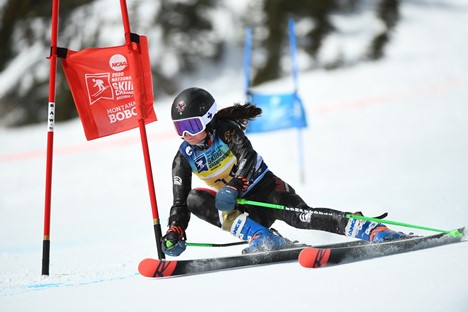
I certainly don’t know whether Parker will “make it,” defined as being named to the U.S. Ski Team or finding success on the World Cup. But I can assure you that Parker has already “made it,” defined as being driven by her passions; finding joy in the journey of ski racing; having the faith, patience, and resilience to overcome slow progress, setbacks, and failures; and having the courage, confidence, and commitment to find out how good she can possibly be (and I’m pretty sure she’s not finished yet!). Parker may or may not go on to become one of the best ski racers in the world. But I am absolutely convinced that she will “make it” in the broader sense. defined as being incredibly successful at something and finding meaning, satisfaction, and joy in her life. And, as far as I’m concerned, that is the real “victory” in Parker’s journey and every other young ski racer (and person) who aspires to their own personal greatness.

